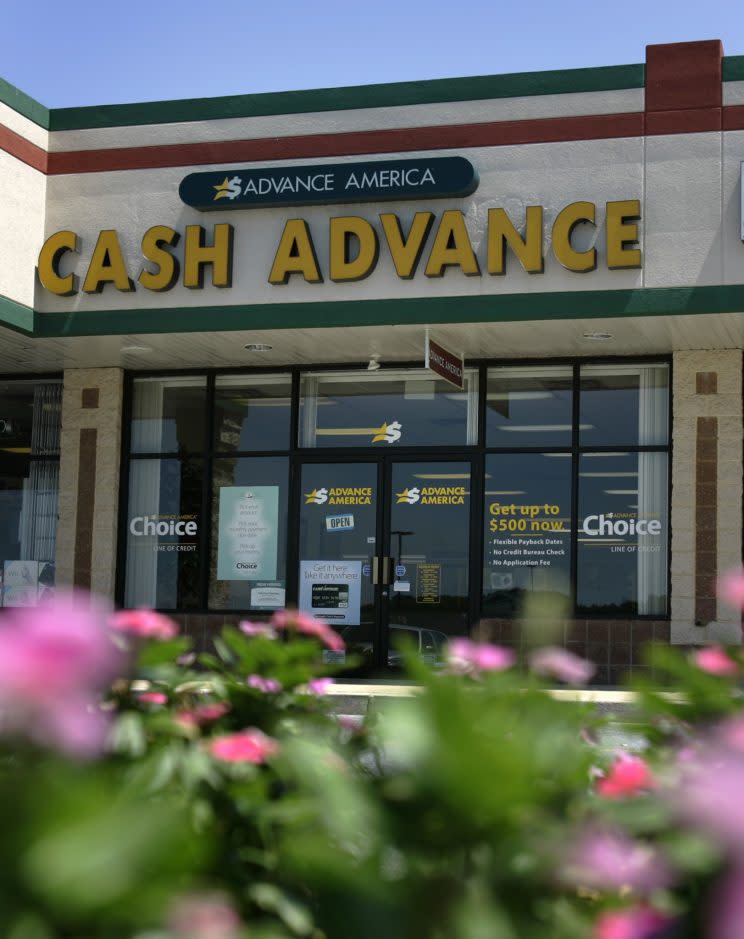Americans want payday loans to be more regulated: Pew Survey

With their alarmingly high interest rates and unreasonable payment schedules, payday loans are a very expensive way for people to borrow money. While many who use these services don’t have other reliable options for short-term loans, a recent survey shows that consumers are getting frustrated with payday lending practices.
In brief, payday loans are short-term loan for a small amount (typically under $500), which usually come due on the borrower’s next payday. These loans generally charge a fixed fee on the amount you borrow.
In a survey from Pew Charitable Trust, 70% of the general public and payday loan borrowers want payday loans to be more regulated. Currently, it is up to each state to set the lending terms, and the interest rates vary greatly depending on where you live. For instance, payday lenders in Idaho charge an average of 582% annual interest on their loans, followed by South Dakota and Wisconsin at 574%. According to the Consumer Financial Protection Bureau (CFPB), the typical two-week payday loan with a $15-per-$100 fee carries an annual percentage rate (APR) of 400%.
At least 16 states have banned or capped payday interest rates at 36%, but it certainly isn’t the norm. That said, over the last couple of months, several states have introduced legislation to mandate regulations. On April 6, New Mexico Gov. Susana Martinez essentially banned payday loans when she signed a bill eliminating small loans with terms less than 120 days, and capping interest rates on small loans at 175%.
In Ohio, a bipartisan bill was introduced in April, and calls for the interest rate on payday loans to be capped at 28% plus a monthly fee of 5% on the first $400 loaned, or $20 maximum. The bill has now been referred to Ohio’s House Government Accountability & Oversight Committee.
Kansas and Nebraska have similar bills in the works, and in 2010, Colorado led the way by passing a law that lengthened the period of loan repayment from 2 weeks to 6 months. It also caps loan interest rates at 45%.
Why can’t people borrow from banks?
According to Pew, 12 million people use payday lenders each year, borrowing $9 billion annually. The issue is that these loans – with their exorbitant interest rates – have to be repaid in a short amount of time, and if they aren’t paid on time, borrowers are hit with extra fees and finance charges. This practice can create a cycle of debt, with the average borrower ultimately paying $520 to repeatedly borrow the same $375.
“Typically, payday loan borrowers can’t pay expenses while also repaying the loan, so they have to borrow again,” said Alex Horowitz, senior research officer at Pew Charitable Trusts.
So why don’t people just take out loans from their bank? Easier said than done. While Pew reports that 70% of Americans want banks to offer small loans to borrowers with poor credit, financial institutions aren’t able to do that and make a profit.

“Current regulation prohibits banks from making small installment loans at scale,” said Horowitz. “For this kind of lending to replace payday lending, very clear simple rules are needed to know what exactly is allowed so they can offer small loans without losing money.”
Those regulations haven’t been put in place just yet, but according to the publication American Banker, a handful of big banks have expressed interest in offering short-term loans to customers using the 5% payment option proposed by the CFPB in 2016 – where borrowers would get charged a 5% fee on the amount they borrow per month. For example, a person borrowing $400 would receive a three-month loan for a $60 fee. According to Pew, payday lenders charge about $350, or six times more, for a similar loan.
Other ways to get cash fast
More than 47% of people in the US are living paycheck to paycheck, meaning an unexpected expense can quickly disrupt household finances. Even so, Ricardo Quinto from the Center for Responsible Lending (CRL), says consumers should avoid payday lenders if possible. “Anything else is better than taking out a payday loan,” Quinto told Yahoo Finance. “Community banks, churches, utility companies, and other alternatives have offered assistance when borrowers are strapped for cash in an emergency.”
Here are some alternatives.
Nerdwallet loan finder
Whether you’re struggling to pay the electricity bill or an unexpected car repair, Nerdwallet has compiled a list of payday loan alternatives that might help you get out of tough financial spot. After entering your zip code here, Nerdwallet displays organizations in your area offering loans with zero or very low interest rates. Some of the loans have restrictions, but it’s worth checking before you go to the payday lender route.
United Way
In several regions around the country, United Way has resources to help people acquire a short-term loan to pay for emergencies. For more information, go online or call 211.
Sell something
Selling your old furniture and electronics has never been easier, thanks to a handful of apps that make your smartphone a virtual marketplace. Download Letgo, Carousell, or Wallapop, upload images of your goods for free, and sell them locally on the same day.
Credit unions
Quito says that credit unions typically offer small-dollar loans at more affordable rates. For example, WSECU is a credit union for employees in Washington State that offers short-term loans through its Q-Cash program. Loans start at $50, have a fixed APR of 73% and allow users to apply through a mobile app. Many credit unions have rules for membership, and you might be eligible to join based on your employer, location, or affiliation with a church or labor union. Other credit unions are open to anyone.
Credit card cash advance
If you’re in a true financial emergency, your credit card could come to the rescue, but it will be costly. A cash advance is a short-term loan you take against your credit card, and are typically capped at a few hundred dollars. To take advantage of this service you simply have to use your credit card at an ATM machine.
CreditCards.com says most cash advances will charge you fees of up to 5% of the amount you borrow. The catch here is that there’s no grace period and you will start accruing interest as soon as the money is removed, so it’s important to repay the advance as soon as possible — don’t wait for your next monthly statement. This interest rate will depend on your credit card, but CreditCards.com says the average cash advance APR is 23.53%, which might be lower than a payday loan. Still, credit cards vary, so be sure to research the rate before you take a cash advance.
Brittany is a reporter at Yahoo Finance.
More:
4 credit cards you need when travel delays strike
Sign up for these credit cards now to help fund your summer vacation

